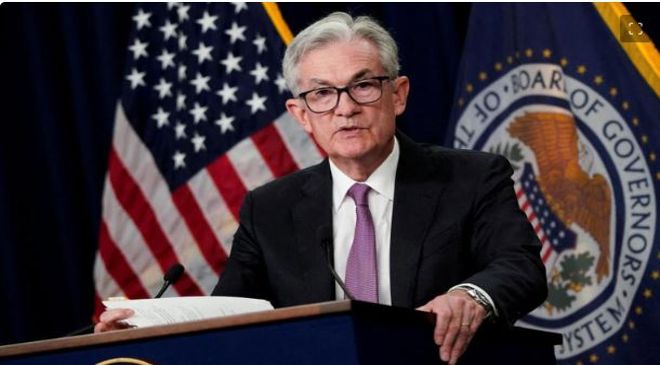At a recent September meeting, the Federal Reserve finally cut its benchmark interest rate. The Fed’s decision — part of an effort to fight inflation — ended a long period of elevated rates.
While this may sound like a high-level financial decision, it can actually have major implications for consumers. Many of these effects are positive, such as lower borrowing costs when it comes to things like mortgages and auto loans. But there is one drawback of the long-awaited Fed rate cut: lower savings rates.
In the last few months, as “the Fed paused its rate-hiking campaign,” rates “inched down,” said Kiplinger; but they “took an even bigger hit” after the Fed’s official announcement. As a result, “you won’t be able to earn what you once did on savings rates.” This raises the question: Should you make any changes to your savings?
Also Read- 2025 Social Security COLA Increase to Be Announced on This Day in October
How much will the Fed cut affect savings rates?
“Savings account rates are loosely linked to the rates the Fed sets,” said Bankrate, which means that “after the Fed lowers its rate, banks tend to lower their deposit account rates.”
Effectively, the federal funds rate is “the interest rate banks charge each other for overnight loans,” and “it acts as a benchmark for the rates offered to customers,” said U.S. News & World Report. “Banks generally raise or lower consumer rates based on what it costs them because they want to maintain the spread between what they’re charging borrowers and paying depositors,” said Rosalyn Glenn, a financial planner with Prudential Advisors, to U.S. News & World Report.
This link was apparent prior to the Fed’s official announcement. “Even before the Fed’s September 18 rate cut, banks were reducing their savings rates, according to financial data company Curinos,” said CBS News. In fact, “more than half of traditional banks had cut their CD rates in anticipation of the rate cut, while one-third had cut their rates on savings accounts.”
Still, said CBS News, these reductions were “relatively small, with most cutting by 0.10 percentage points or less.”
Also Read– Social Security Will Undergo 3 Changes In 2025. How Will It Affect Retirees?
Are high-yield savings accounts and CDs still worthwhile?
“While savers have likely missed the rate peak, it can still be a good time to seek these accounts,” said LendingTree credit analyst Matt Schulz to CBS News.
For example, “several banks are offering high-yield savings accounts with APYs of 4.85%,” which, while “down from a peak of 5% or more prior to the rate cut” is still a “relatively robust offer,” said CBS News.
Further, even though a downward trend in savings rates will likely continue over the coming months, “yields will continue topping inflation,” and they are “also bound to remain higher than they were in the aftermath of the coronavirus pandemic,” said Bankrate.
Also Read– This Is How Credit Card Companies Make Their Money
What can you do to maximize your savings rate in this new rate environment?
With savings rates no longer quite as high as they once were, there are moves you can make to ensure you are still getting the most out of your funds parked in savings. Here are some tips to keep in mind:
Look to online banks for the highest rates. “Online savings accounts tend to offer better rates — many times higher than that average — because institutions that offer these accounts don’t have to operate expensive brick-and-mortar branches and can pass the savings on to customers in the form of higher rates and low (or no) fees,” said NerdWallet. As such, if you are aiming to maximize your yield, look online.
Be open to moving your funds. Especially in this rate environment, do not sit back and assume your money is earning the best rate possible. “Even if you have a high-yield savings account, you should still shop around to confirm whether your bank has the best rates and be ready to move your funds if you can find an account that earns more,” said U.S. News & World Report.
Also Read– Money market account vs. checking account: What’s the difference?
Lock in rates before they fall further with a long-term CD. Yields on CDs “have already begun edging lower as the Fed prepares to cut rates — a trend that’s bound to continue once interest rates officially fall,” said Bankrate. As such, “now is the time to lock in high-yielding CDs,” said financial analyst Greg McBride to Bankrate. “There is no advantage to waiting,” as yields will “accelerate further the longer you wait.”











































